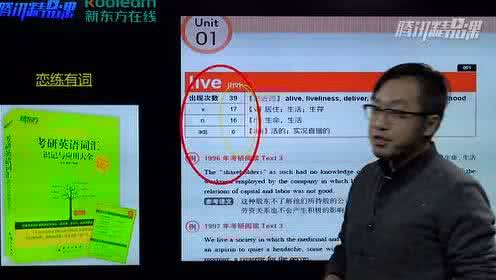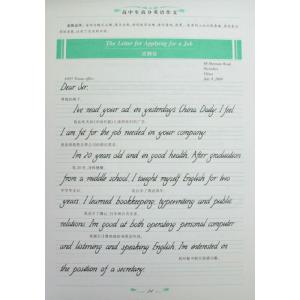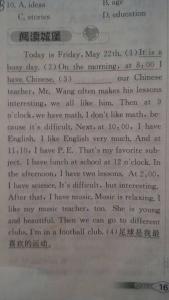阅读,作为考研英语的重中之重,是英语底蕴和英语思维的积累。下面是小编带来的考研英语阅读文章,欢迎阅读!
考研英语阅读文章Controled bleeding or cauterisation? That was the unappealing choice facing UBS, a Swiss bank which has been badly hurt by the carnage in America’s mortgage market. The bank opted for the latter. First it opened the wound, by announcing a hefty $10 billion write-down on its exposure to subprime-infected debt. UBS now expects a loss for the fourth quarter, which ends this month. Then came the hot iron: news of a series of measures to shore up the bank’s capital base, among them investments from sovereign-wealth funds in Singapore and the Middle East.
Bad news had been expected. UBS’s third-quarter write-down of over SFr4 billionin October looked overly optimistic compared with more aggressive markdowns at other banks such as Citigroup and Merrill Lynch. Steep falls in the market value of subprime debt since the end of the third quarter made it certain that UBS would take more pain, given its sizeable exposure to toxic collateralised-debt obligations . Analysts at Citigroup were predicting in November that write-downs of up to SFr14 billion were possible.

Why then did this new batch of red ink still come as a shock? The answer lies not in the scale of the overall loss, more in UBS’s decision to take the hit in one go. The bank’s mark-to-model approach to valuing its subprime-related holdings had been based on payments data from the underlying mortgage loans. Although these data show a worsening in credit quality, the deterioration is slower than mark-to-market valuations, which have the effect of instantly crystallising all expected future losses.
Thanks to this gradualist approach, UBS had been expected to take write-downs in managed increments of SFr2 billion-3 billion over a period of several quarters. It now appears that the bank has incorporated market values into its model, sending its fourth-quarter write-downs into orbit. The change of approach may be on the advice of auditors and regulators but it is more likely to reflect a desire by UBS’s bosses to avoid months of speculation about the bank’s exposure, something that Marcel Rohner, the chief executive, described as "distracting".
In a particular indignity for a bank long associated with conservatism, concerns about the level of UBS’s capital ratio had even started to surface. Hence the moves to strengthen its tier-one capital, an important measure of bank solidity, by SFr19.4 billion, a great deal more than the write-down. The majority of that money will come from sovereign-wealth funds, the white knights of choice for today’s bank in distress. Singapore’s GIC, which manages the city-state’s foreign reserves, has pledged to buy SFr11 billion-worth of convertible bonds in UBS; an unnamed Middle Eastern investor will put in a further SFr2 billion. UBS will also raise money by selling treasury shares, and save cash by issuing its 2007 dividend in the form of shares. Its capital ratio is expected to end up above 12% in the fourth quarter, a strong position.The majority of that money will come from sovereign-wealth funds, the white knights of choice for today’s bank in distress.
Hopeful talk of lines being drawn under the subprime crisis has been a feature of banks’ quarterly reporting since September. Marrying bigger-than-expected write-downs with bigger-than-expected boosts to capital looks like the right treatment in this environment. But UBS still cannot be sure that its problems are over. Further deterioration in its subprime asset values is possible; the broader economic impact of the credit crunch is unclear; and the damage to the bank’s reputation cannot yet be quantified. The patient still needs watching.
考研英语阅读文章He emerged, all of a sudden, in 1957: the most explosive new poetic talent of the English post-war era. Poetry specialised, at that moment, in the wry chronicling of the everyday. The poetry of Yorkshire-born Ted Hughes, first published in a book called "The Hawk in the Rain" when he was 27, was unlike anything written by his immediate predecessors. Driven by an almost Jacobean rhetoric, it had a visionary fervour. Its most eye-catching characteristic was Hughes’s ability to get beneath the skins of animals: foxes, otters, pigs. These animals were the real thing all right, but they were also armorial devices-symbols of the countryside and lifeblood of the earth in which they were rooted. It gave his work a raw, primal stink.
It was not only England that thought so either. Hughes’s book was also published in America, where it won the Galbraith prize, a major literary award. But then, in 1963, Sylvia Plath, a young American poet whom he had first met at Cambridge University in 1956, and who became his wife in the summer of that year, committed suicide. Hughes was vilified for long after that, especially by feminists in America. In 1998, the year he died, Hughes broke his own self-imposed public silence about their relationship in a book of loose-weave poems called "Birthday Letters".In this new and exhilarating collection of real letters, Hughes returns to the issue of his first wife’s death, which he calls his "big and unmanageable event". He felt his talent muffled by the perpetual eavesdropping upon his every move. Not until he decided to publish his own account of their relationship did the burden begin to lighten.
The analysis is raw, pained and ruthlessly self-aware. For all the moral torment, the writing itself has the same rush and vigour that possessed Hughes’s early poetry. Some books of letters serve as a personalised historical chronicle. Poets’ letters are seldom like that, and Hughes’s are no exception. His are about a life of literary engagement: almost all of them include some musing on the state or the nature of writing, both Hughes’s own or other people’s. The trajectory of Hughes’s literary career had him moving from obscurity to fame, and then, in the eyes of many, to life-long notoriety. These letters are filled with his wrestling with the consequences of being the part-private, part-public creature that he became, desperate to devote himself to his writing, and yet subject to endless invasions of his privacy.
Hughes is an absorbing and intricate commentator upon his own poetry, even when he is standing back from it and good-humouredly condemning himself for "its fantasticalia, its pretticisms and its infinite verballifications". He also believed, from first to last, that poetry had a special place in the education of children. "What kids need", he wrote in a 1988 letter to the secretary of state for education in the Conservative government, "is a headfull [sic] of songs that are not songs but blocks of refined and achieved and exemplary language." When that happens, children have "the guardian angel installed behind the tongue". Lucky readers, big or small.
考研英语阅读文章The haunting paintings of Helene Schjerfbeck, on show in the final leg of a travelling tour that has already attracted thousands of visitors in Hamburg and The Hague, may come as a surprise to many. Few outside the Nordic world would recognise the work of this Finnish artist who died in 1946. More people should. The 120 works have at their core 20 self-portraits, half the number she painted in all. The first, dated 1880, is of a wide-eyed teenager eager to absorb everything. The last is a sighting of the artist’s ghost-to-be; Schjerfbeck died the year after it was made. Together this series is among the most moving and accomplished autobiographies-in-paint.
Precociously gifted, Schjerfbeck was 11 when she entered the Finnish Art Society’s drawing school. "The Wounded Warrior in the Snow", a history painting, was bought by a private collector and won her a state travel grant when she was 17. Schjerfbeck studied in Paris, went on to Pont-Aven, Brittany, where she painted for a year, then to Tuscany, Cornwall and St Petersburg. During her 1887 visit to St Ives, Cornwall, Schjerfbeck painted "The Convalescent". A child wrapped in a blanket sits propped up in a large wicker chair, toying with a sprig. The picture won a bronze medal at the 1889 Paris World Fair and was bought by the Finnish Art Society. To a modern eye it seems almost sentimental and is redeemed only by the somewhat stunned, melancholy expression on the child’s face, which may have been inspired by Schjerfbeck’s early experiences. At four, she fell down a flight of steps and never fully recovered.
In 1890, Schjerfbeck settled in Finland. Teaching exhausted her, she did not like the work of other local painters, and she was further isolated when she took on the care of her mother . "If I allow myself the freedom to live a secluded life", she wrote, "then it is because it has to be that way." In 1902, Schjerfbeck and her mother settled in the small, industrial town of Hyvinkaa, 50 kilometres north of Helsinki. Isolation had one desired effect for it was there that Schjerfbeck became a modern painter. She produced still lives and landscapes but above all moody yet incisive portraits of her mother, local school girls, women workers in town . And of course she painted herself. Comparisons have been made with James McNeill Whistler and Edvard Munch. But from 1905, her pictures became pure Schjerfbeck.
"I have always searched for the dense depths of the soul, that have not yet discovered themselves", she wrote, "where everything is still unconscious-there one can make the greatest discoveries." She experimented with different kinds of underpainting, scraped and rubbed, made bright rosy red spots; doing whatever had to be done to capture the subconscious-her own and that of her models. In 1913, Schjerfbeck was rediscovered by an art dealer and journalist, Gosta Stenman. Once again she was a success. Retrospectives, touring exhibitions and a biography followed, yet Schjerfbeck remained little known outside Scandinavia. That may have had something to do with her indifference to her renown. "I am nothing, absolutely nothing", she wrote. "All I want to do is paint". Schjerfbeck was possessed of a unique vision, and it is time the world recognised that.
 爱华网
爱华网



